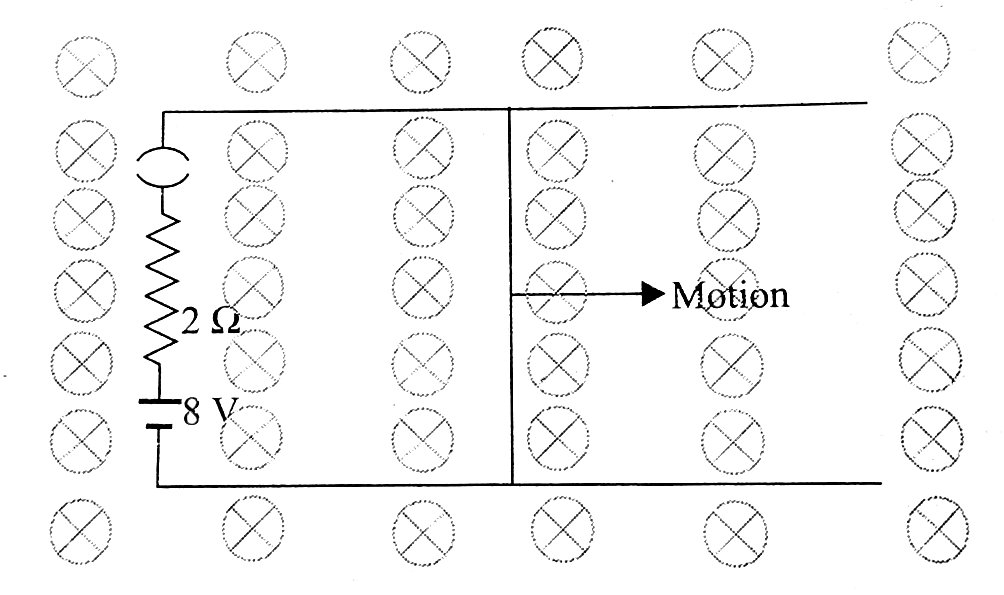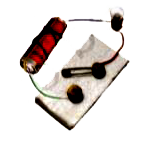Using the 'conduction tester on an objectit was found that the bulb begins to glow. Is that object a conductor or an insulator? Explain.
To determine whether the object is a conductor or an insulator based on the conduction tester's results, we can follow these steps:
1. Understanding the Conduction Tester:
- A conduction tester is a device that checks whether an object allows electric current to pass through it. It typically consists of a bulb and a battery connected by wires.
2. Observing the Bulb's Behavior:
- When the conduction tester is used on the object, it is noted that the bulb begins to glow.
3. Analyzing the Bulb's Glow:
- The glowing of the bulb indicates that electric current is flowing through the circuit. For the bulb to glow, there must be a complete circuit formed, which requires a conductive path.
4. Determining the Type of Material:
- If the object were an insulator, the electric current would not be able to flow through it. Consequently, the bulb would not glow. Since the bulb does glow, we can conclude that the object must allow electric current to pass through.
5. Conclusion:
- Therefore, the object tested is a conductor because it allows electric current to flow, which is evidenced by the glowing bulb.
Final Answer:
The object is a conductor because the bulb glows when the conduction tester is used, indicating that electric current is flowing through the object.
---
- A conduction tester is a device that checks whether an object allows electric current to pass through it. It typically consists of a bulb and a battery connected by wires.
- When the conduction tester is used on the object, it is noted that the bulb begins to glow.
- The glowing of the bulb indicates that electric current is flowing through the circuit. For the bulb to glow, there must be a complete circuit formed, which requires a conductive path.
- If the object were an insulator, the electric current would not be able to flow through it. Consequently, the bulb would not glow. Since the bulb does glow, we can conclude that the object must allow electric current to pass through.
- Therefore, the object tested is a conductor because it allows electric current to flow, which is evidenced by the glowing bulb.
The object is a conductor because the bulb glows when the conduction tester is used, indicating that electric current is flowing through the object.
Topper's Solved these Questions
- ELECTRICITYBOOK - S CHAND IIT JEE FOUNDATIONCHAPTER - ELECTRICITYEXERCISE - SELF ASSESSMENT SHEET
22 Videos
- ELECTRICITYBOOK - S CHAND IIT JEE FOUNDATIONCHAPTER - ELECTRICITYEXERCISE - SELF ASSESSMENT SHEET
22 Videos
- FORCE AND PRESSURE BOOK - S CHAND IIT JEE FOUNDATIONCHAPTER - FORCE AND PRESSURE EXERCISE - Self Assessment Sheet
11 Videos
Similar Questions
Using the 'conduction tester on an objectit was found that the bulb begins to glow. Is that object a conductor or an insulator? Explain.
View SolutionUsing the ‘conduction tester’ on an object, it was found that the bulb begins to glow. Is the object a conductor or an insulator? Explain.
View Solution
Knowledge Check
Figure shows a conducting frame having battery and a resistance on which a movable conductor of length 0.5 m can slide, The whole arrangement is placed in a uniform magnetic field of B =0.4 T directed perpendicular and into the plane of frame. Initially the circuit is open. When the key is inserted, the conductor begins to move. It is found that a force 0.5 N has to be applied on the conductor to the left to keep it moving at constant speed to the right.
Current flowing in the conductor is:
 A5AB2.5 AC1.25 AD1A
A5AB2.5 AC1.25 AD1A
How will you show that an object is an electric conductor or an insulator ?
View SolutionThe conduction band of a solid is partially filled at 0 K.will it be a conductor, a semiconductor or an insulator?
View SolutionExplain formation of energy band in solids. Distinguish between conductors, extrinsic and intrinsic semi-conductors and insulators on the basis of band theory.
View SolutionWill the bulb glow in the circuit shown in Fig. 12.6? Explain.

View SolutionWhat is thermal conductivity of a perfect heat conductors of a perfect heat conductor and a perfect heat insulator?
View SolutionGive one point of difference between the following
(a) Conduction of heat and Convection
(b) Conductors and Insulators
View SolutionOut of the ionic, covalent and metallic and van der Waal's solids, which will be widely used to produce a conductor, semiconductor and insulator?
View Solution
